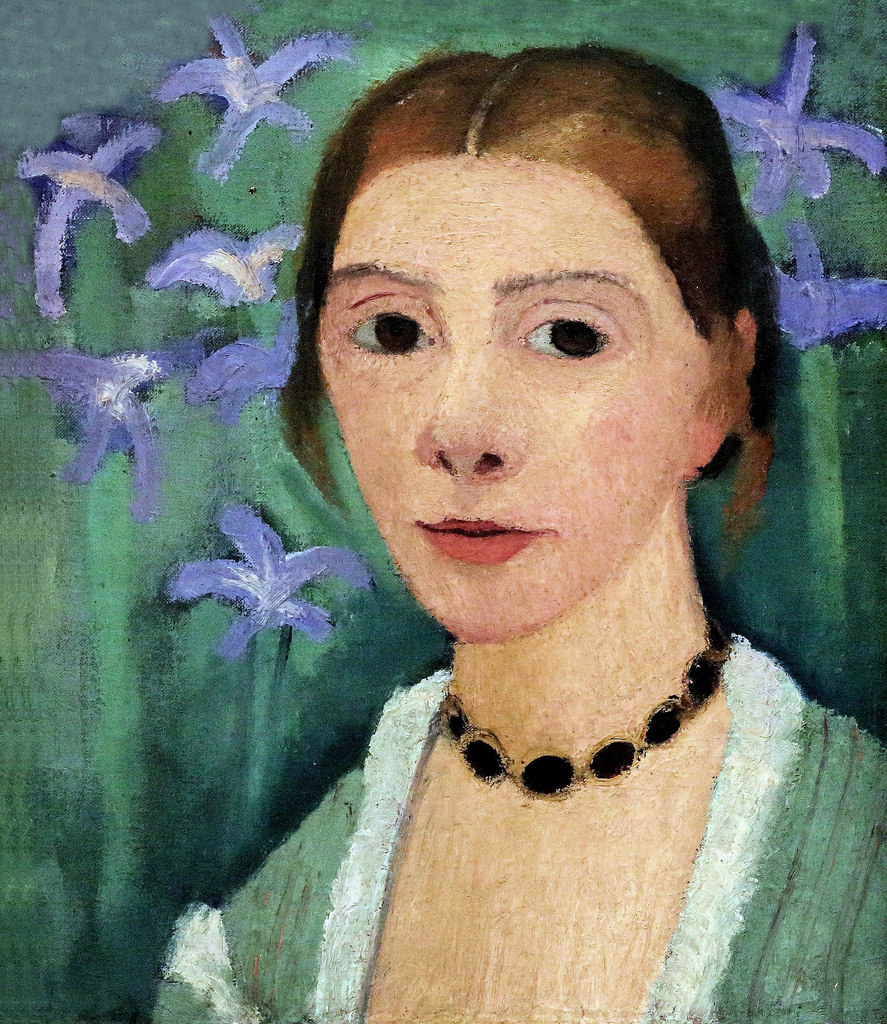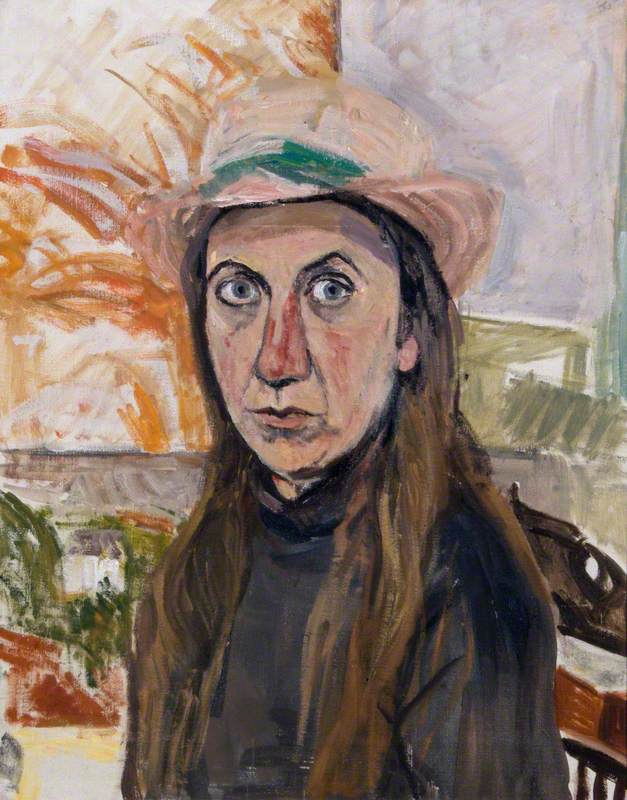The Fine Art of Floundering
"Any artist who puts a time limit on navigating their way to making a living is destined for failure." Neil Welliver
It's one thing to pursue our art in school, where we have teachers and assignments to keep us focused, and it's a whole other thing to be out in the world on our own, painting, sculpting, making films, writing poems, composing music, following wherever our art passion leads us. Only ten percent of art majors end up working full-time in the arts after they graduate. Why is that?
Gwen John, “Self Portrait Holding a Letter”
The short answer is that life often gets in the way of making art. We’d like some money in the bank, a decent place to live, a loving relationship. But these normal human desires interfere with what young artists need most: time, and lots of it. Time to learn to work alone, time to experiment, time to develop an individual voice, time to flounder.
The thing about floundering is that it’s not something we do in a group, with our peers for company. The restless trying, failing, trying again, getting a little closer, anxiously retreating, with an occasional sidestep to change things up. . . this is a solitary dance.
Paula Modersohn-Becker, “Self Portrait with Flowers”
What a young artist does alone in the studio is not like a normal first job, where there are company rules, and clear expectations from the boss. Trying to figure out how to make one’s art is messy, uncertain work, without guarantee of payment.
If success comes quickly, as it does for a few young artists these days, that can be a mixed blessing. Their work will command high prices, but along with demand comes pressure to produce a high volume of the product that’s made their reputation. Is being locked into a very specific style of art at a young age a good thing? Steady sales are wonderful, but not having the freedom to experiment, to try and fail, and try again, is a loss.
Helene_Schjerfbeck, “Self Portrait”
In the years after I left art school, I had an extreme case of floundering. I wasn't sure how, or what, I wanted to paint. This feeling of not understanding so much about something I loved was painful. Anything--following a boyfriend around Central America, volunteering for world peace, having a baby on no money--felt easier than this uncertain art.
Susan Abbott, “Self Portrait by the Ocean”
But through all the twists and turns, somehow I managed to keep hold of the line of my work. I improvised studios wherever I lived, and, even if I wasn’t sure what to do with them, held a pencil or brush in my hand whenever I could. I painted figures, still life and landscapes; printed woodblocks, lithographs and etchings; sewed, embroidered and quilted; calligraphed, rendered and collaged. But all this activity felt more like constant floundering than creative flowering.
Kathe Kollwitz, “Self Portrait”
I was trying to figure out what my own unique work was, and no one was paying me to to do that. Like many young artists, I lived cheap, piecing together just enough illustration and lettering jobs to get by. I managed to keep my hand and head focused on painting until, finally, I had an idea of what I wanted to do, and how to do it.
Looking back now, I see those difficult years as a gift. They taught me what I hadn’t learned in seven years of art school: how to trust my own process, how to be stubborn, how to take both success and failure with a grain of salt.
Jess Cook, “Italian Straw Hat”
It makes no sense, I know—but when we feel lost about which way to go with our art, it can mean we're on the right track. The definition of “flounder” is to struggle, be out of one's depth, to have difficulty, to be confounded, to be confused. These uncomfortable states can mean we’re learning and growing by trying new ways to work. Getting better by getting a little worse, moving out of our comfort zone, sometimes floundering, sometimes inching upstream, slowly, slowly, we find our own way to be an artist.
Your comments are welcome below!





